One of the most difficult problems in business is scaling your product and business beyond regular constraints. Typically, people assume products don’t scale because of time, money, and people constraints - I disagree.
In this article, I’ll explain why products don’t actually scale, and walk you through three steps to overcome these hurdles; doing things that don’t scale, working your brain muscles every day, and being bold.
My name's Sebastian and I'm a Product Marketing Lead for a cybersecurity company called Bitdefender. In this article, I will try to be your source of education, enlightenment, and entertainment.
A very serious problem, one of the most difficult problems in business is scaling your product and business beyond what can be considered a regular constraint.
Over the past couple of years, I've taken a couple of products from zero to one, in the words of Peter Thiel, or from zero to over $1 million annual recurring revenue after having previously worked on some more mature products.
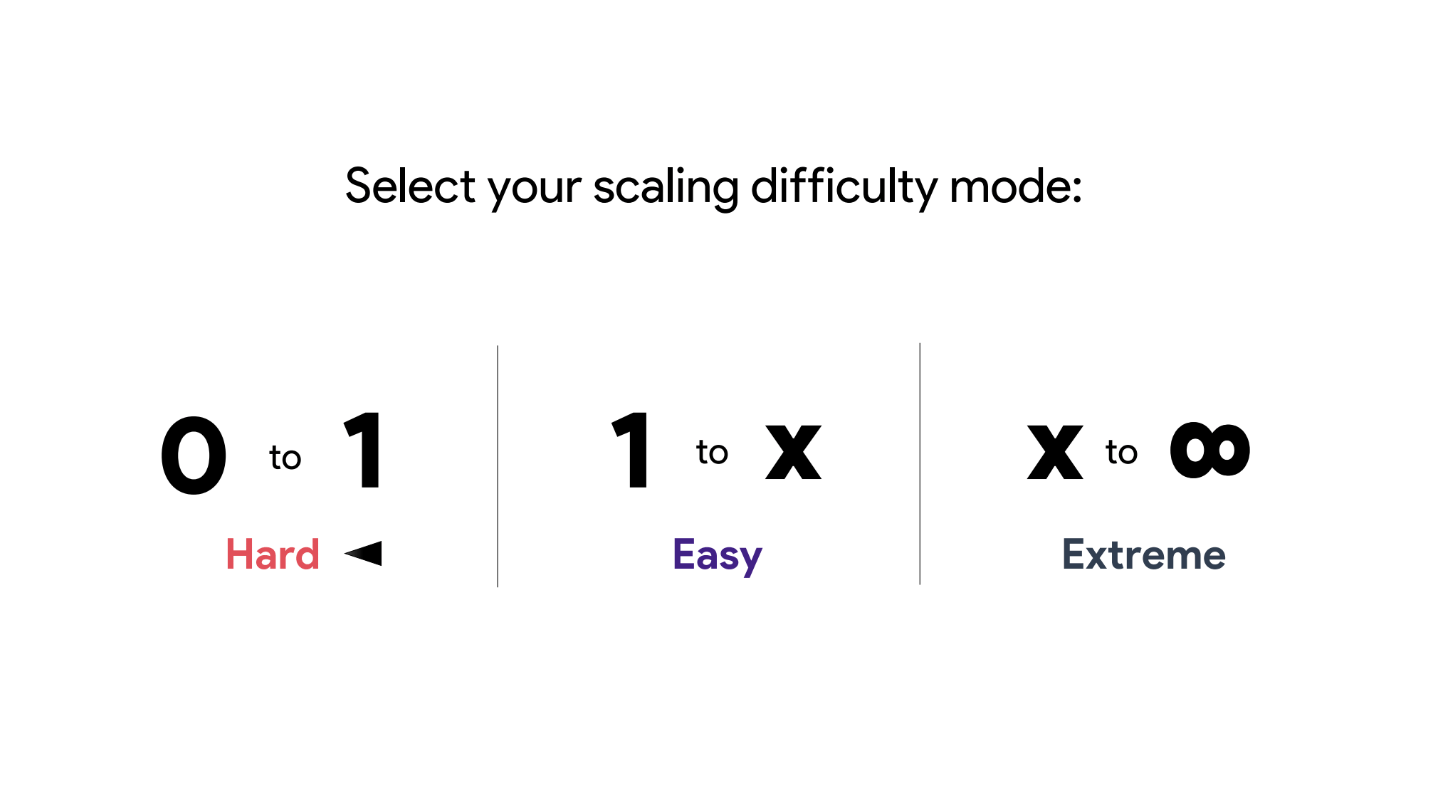
Scaling is not a conventional problem
Let me tell you it's much harder to scale something that doesn't really exist than it is to take something that is well established and maybe grow 15 to 20% a year. The reason for this is because scaling is not a conventional problem in the sense that we can do X and get results Y.
We are pretty good at predicting impossible outcomes but quite bad at predicting success.

To give you an example of why that is, a question, who wants their product to be the most successful?
This is why we are biased towards predicting our own success, but also pretty good at seeing what else doesn't work for other people. We know what can possibly scale because we recognize the problems and usually not our own problems, but we don't know what will actually scale.
An example of that comes from 1903, the most horribly wrong person in history told Henry Ford's lawyer the horse was there to stay, but the automobile was just a novelty, a fad.
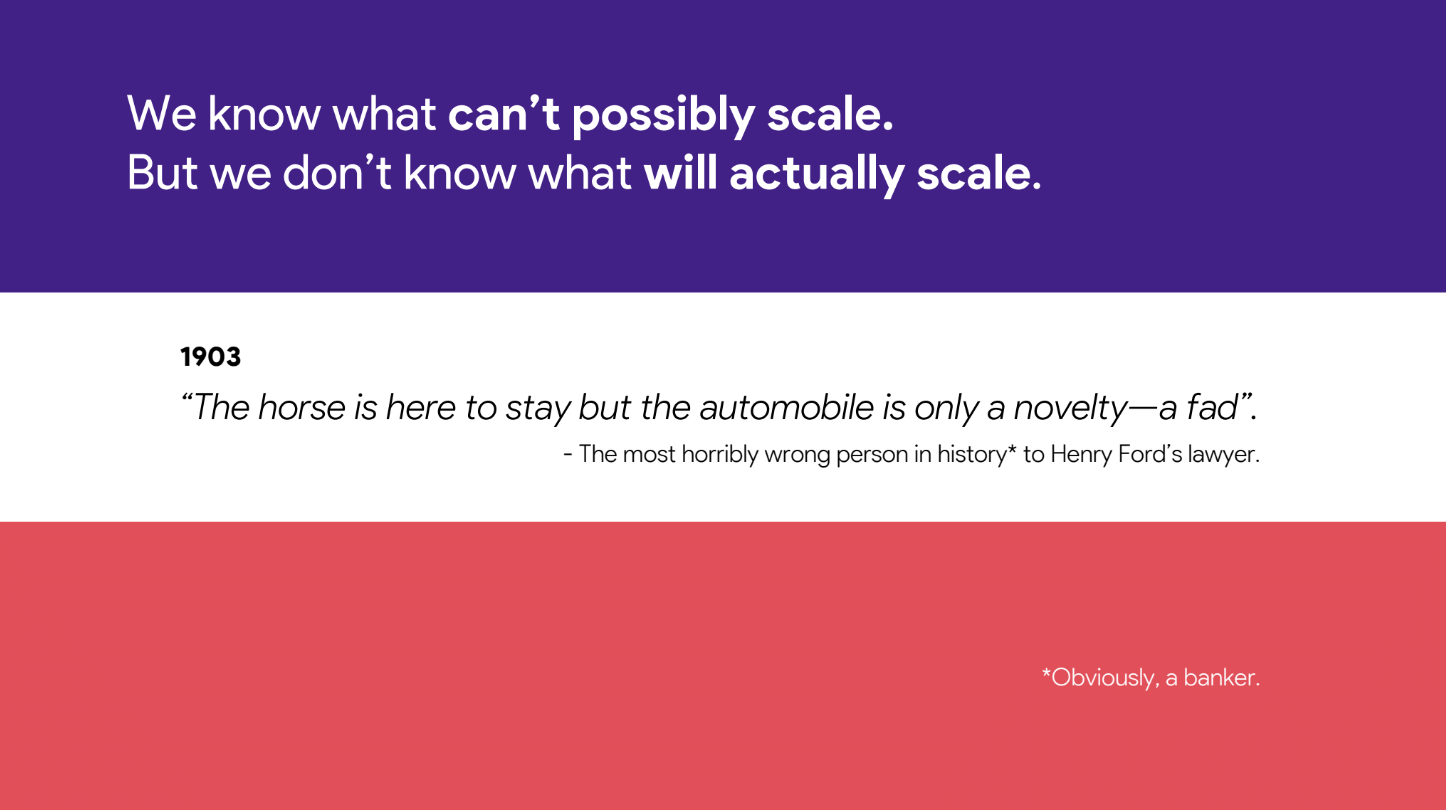
Obviously, he was a banker, investing against putting money into Henry Ford's business.
Hindsight is a beautiful thing
The result is called hindsight and everybody who wants to look smart today can say, "Oh, look, Amazon did all the right things in the 90s. Of course, they're very successful today". But can you say the same thing about your own product?
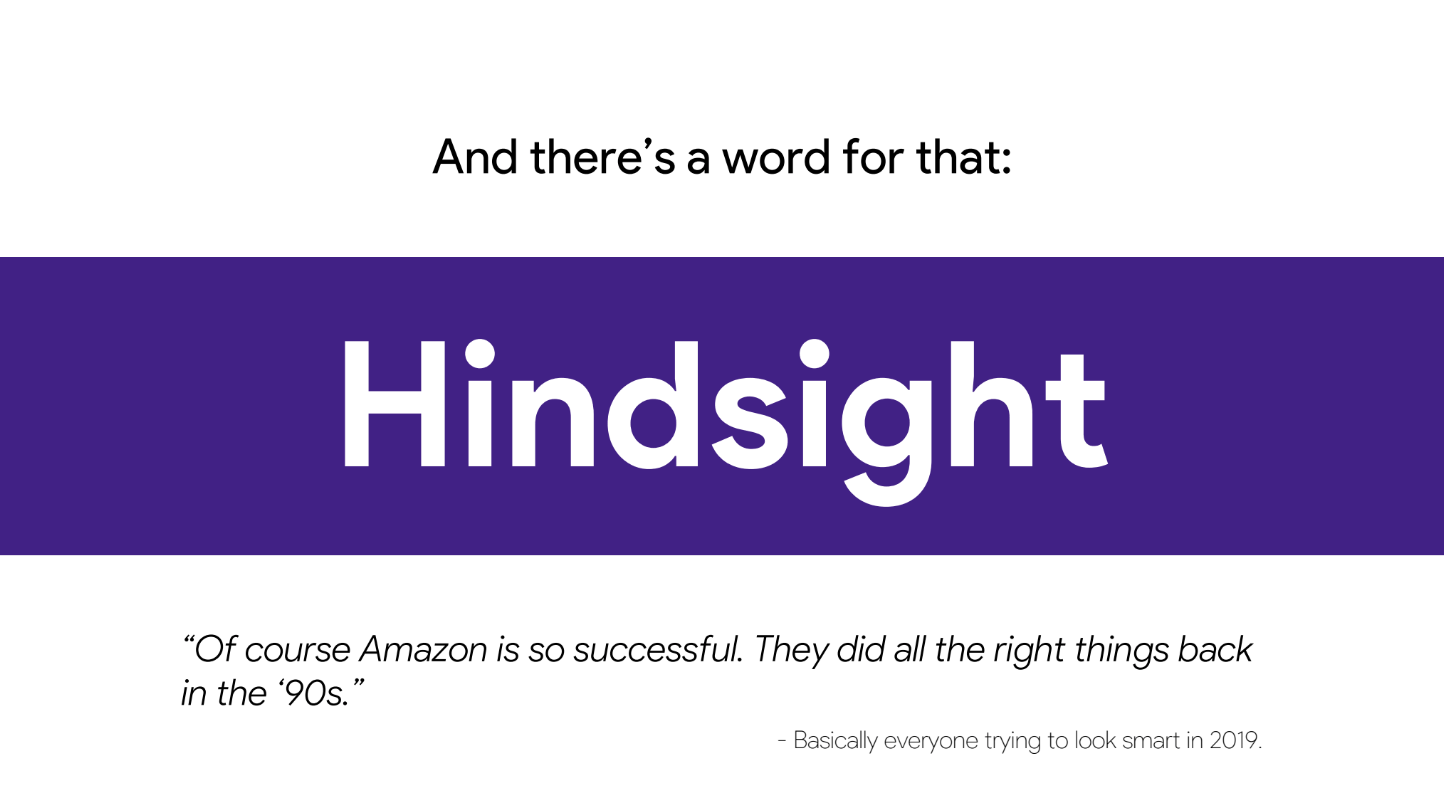
Can you say I am doing the right things now, and I will be successful 100% guaranteed in a couple of years?
Why people think products don’t scale
Why do you think products do not scale? Usually, there are three things that come to mind.
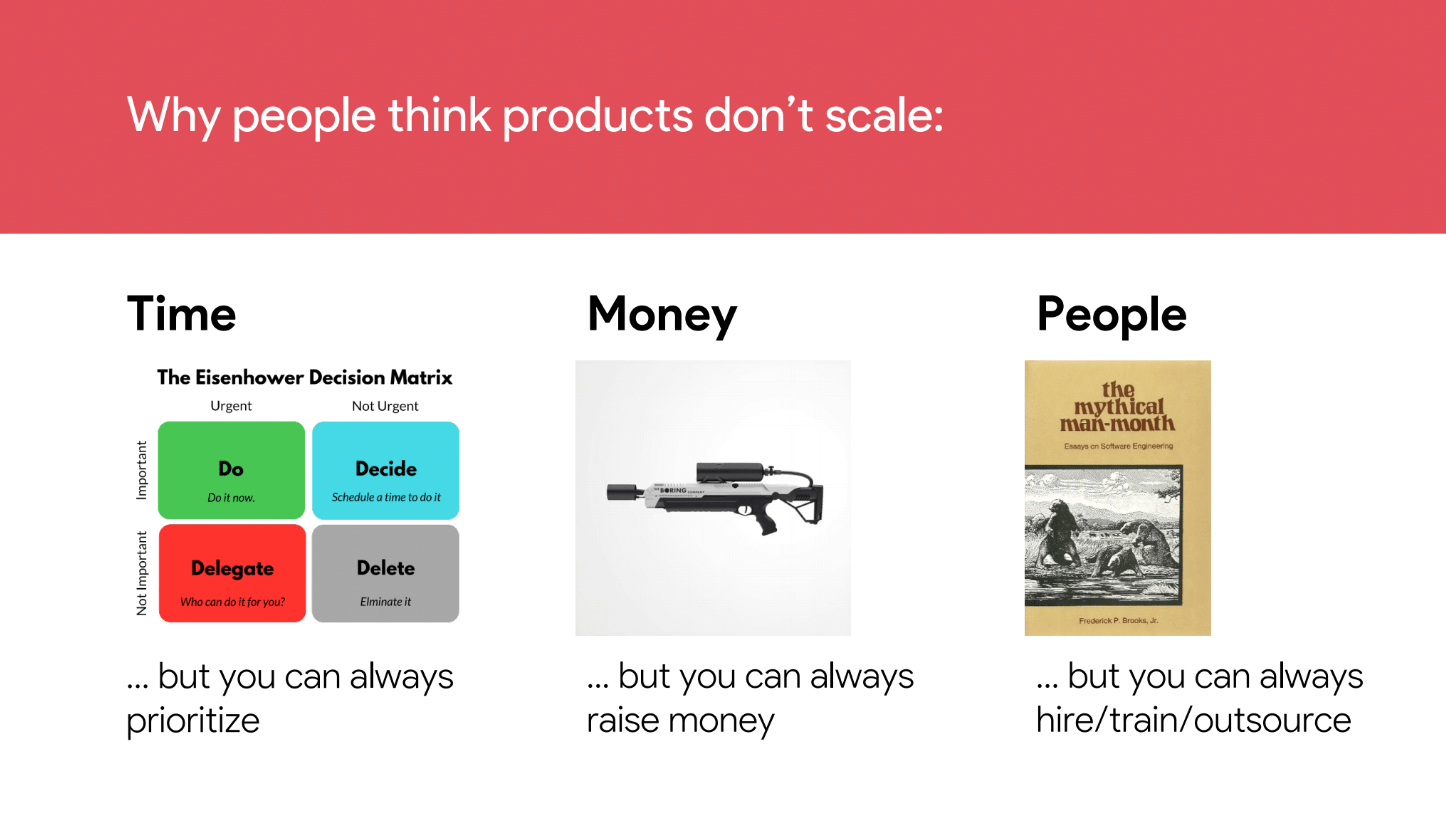
Time
One of them is time, but you can always prioritize. There's a way to decide on what to focus on. It's called the Eisenhower Decision Matrix, the American president with the same name used it.
Using it, you can map things across two scales, one of them is urgency and the other importance.
- If things are not urgent and not important, you probably can safely ignore them.
- If they are not urgent but they are important you can set a schedule for them.
- If they're not important but they're urgent, you can always find someone to delegate to.
- We as product marketers should focus on the things that are both urgent and important.
Money
Another thing is money. But we can always raise money. For example, The Boring Company, it's not that they're dull, it's that they bore tunnels. It's an Elon Musk company, which was quite strapped for cash, if you can believe that, in the beginning.
They sold off 50,000 baseball caps at $20 apiece. Initially, they raised $1 million, and then they ran out of money. What they did was launched a flame thrower which made them $10 million, which they used for their main product, which is digging tunnels and connecting infrastructure underground.
People
Another reason is people. One of my favorite books on this issue is The Mythical Man Month by a guy called Fred Brooks. You might have heard of Brooks law which says any people addition to a project that's already late will make it only later.
Yes, you can hire, train, outsource people but if you don't do it at the right time, you're probably going to set yourself up for failure.
It's easy to remember, there's a magazine for each of these excuses.
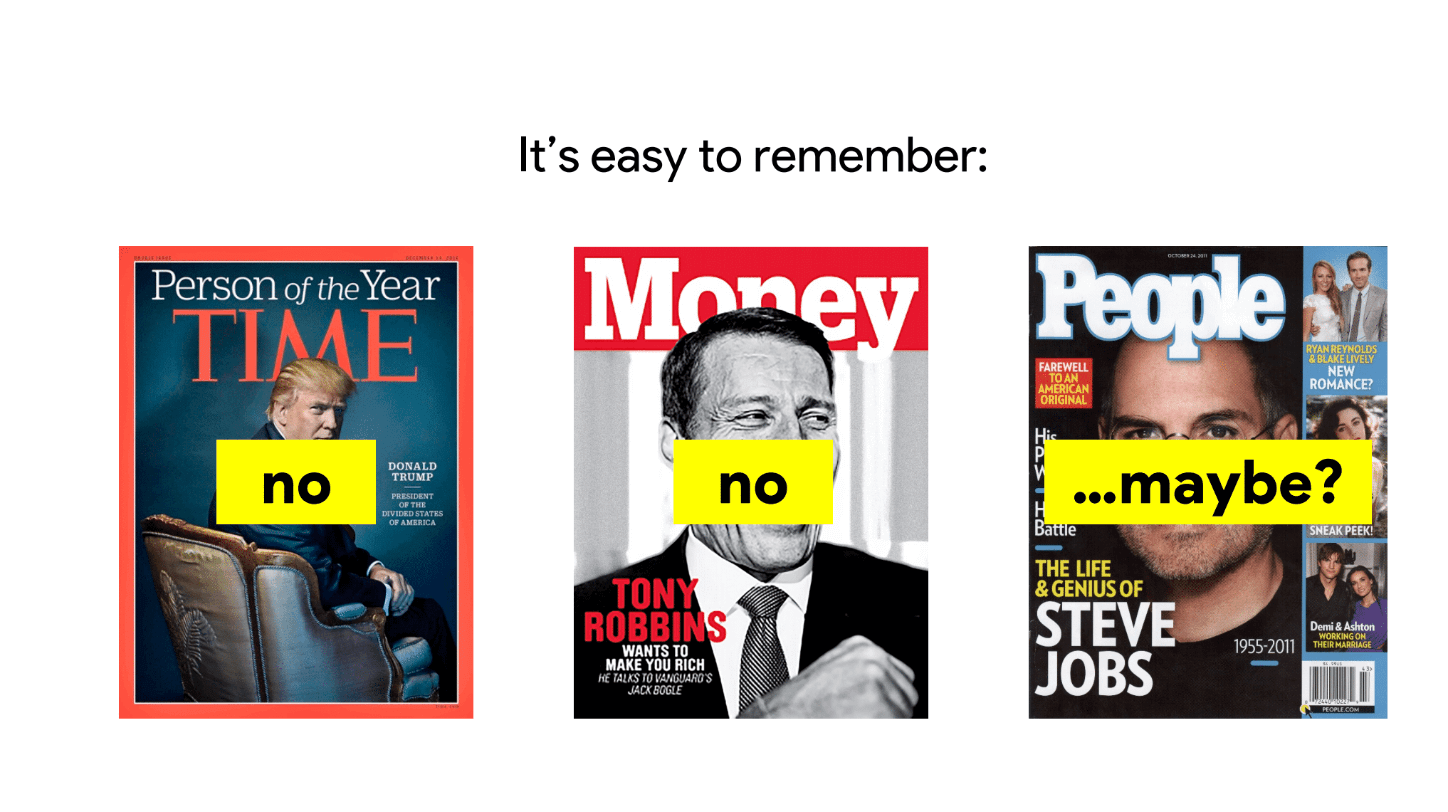
What do we say to these people? We say, no, no, and possibly maybe.
Why products don’t actually scale
Let's see why products don't actually scale.
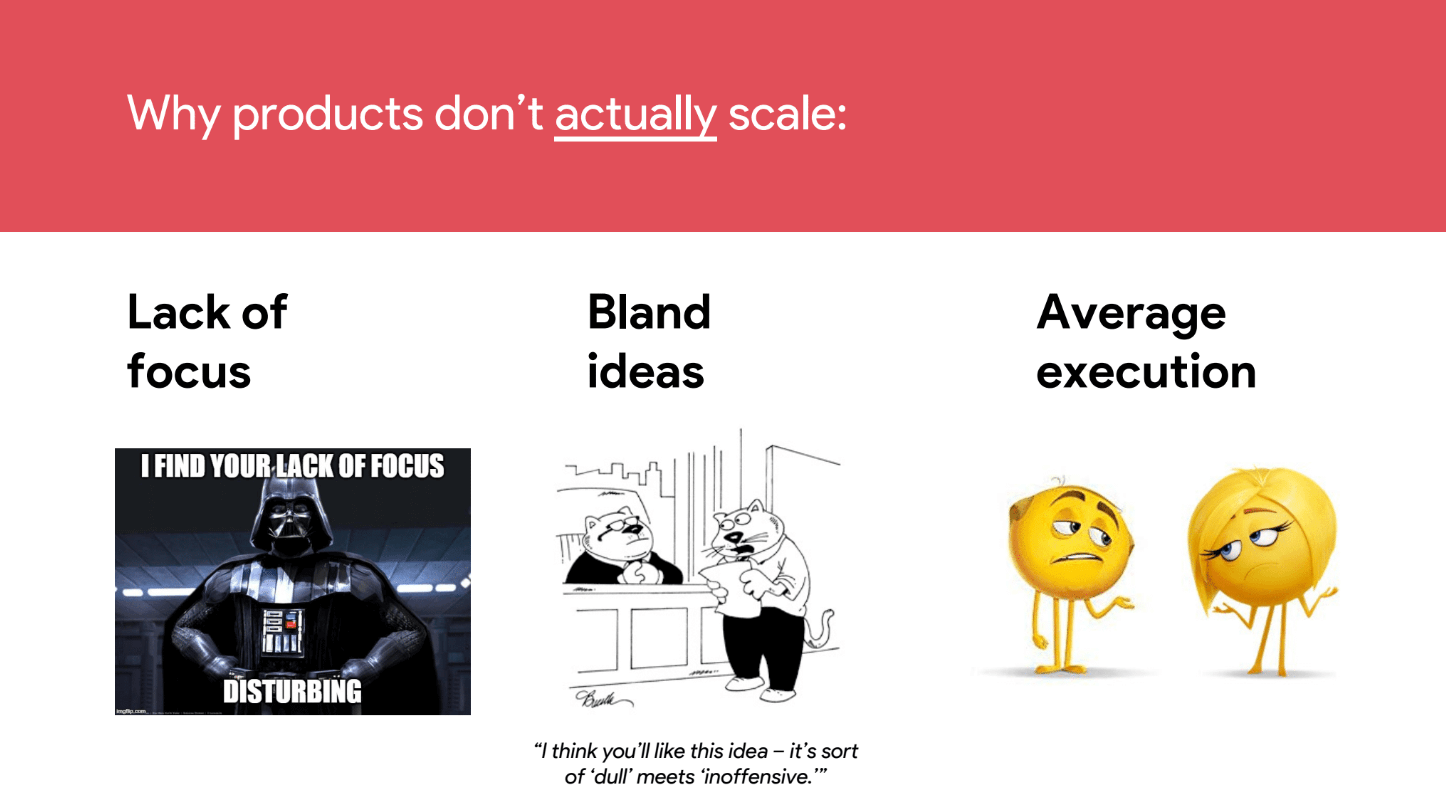
- Lack of focus - To our shame, one of them is we lack focus, we're in a lot of meetings all the time, we're looking at data, we're looking at the wrong data, we're interpreting it wrong, and we're not really looking at the market.
- Bland ideas - A lot of what happens in the office is not as important as you think, for those of you who have done the pragmatic framework you may remember 'nothing important happens in the office'. It's true.
What does originate in the office is usually bland ideas, boring ideas, dull meets inoffensive, everybody's doing the same thing. There are ideas floating in the air and everybody's picking the same ones from the same exact pool of ideas.
- Average execution - The other one is, obviously, average execution, because you can't really drive your positioning and your messaging if your starting point is a boring idea.
Lack of focus
Let's see what constitutes a lack of focus. To do this, I want to play a little game in the form of a round of Who Wants to Be a Millionaire PMM edition. I want you to take a couple of moments and look at this image.
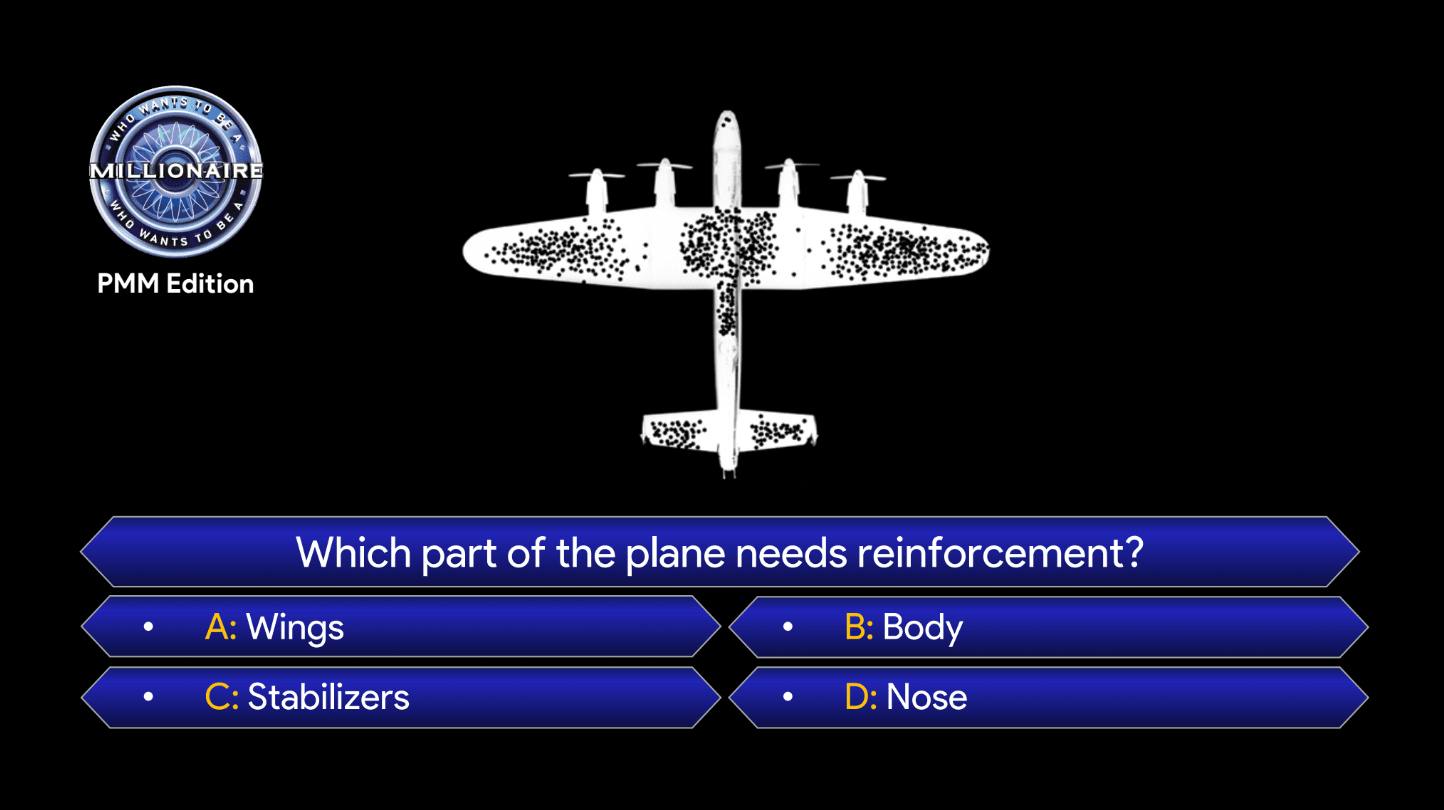
It's a real problem from 1942. The US Army looked at the planes that were returning to American bases and decided they needed to upgrade their product, their airplanes, so as to make them more resilient to enemy fire.
They looked at every plane that was coming to the base, mapped out where they had holes in the fuselage and what do you think their conclusion was? Which part of the planes needed more reinforcement?
The answer was the cockpit, the engines, and the tail needed the most reinforcement. The first reaction was 'we're going to look at where the most black spots are on this chart, and we're going to reinforce those'.

But luckily, they had a mathematician named Abraham Wald, who told them that their data is biassed, they were not collecting the right information, they are not looking at it from the right angle. The map actually showed them that planes who had suffered shots to the engines were not actually coming back to the base so you could drive a conclusion from it.
How much are you relying on data?
We're not as lucky as those people usually, we might or might not have BI teams who deliver the right insights to us. I'm willing to bet many of us are relying either too much or too little on data.
- If you're relying too much, you probably are waiting to make decisions based only on data.
- If you're using it too little, you're probably just using your gut instinct.
Do these look familiar?
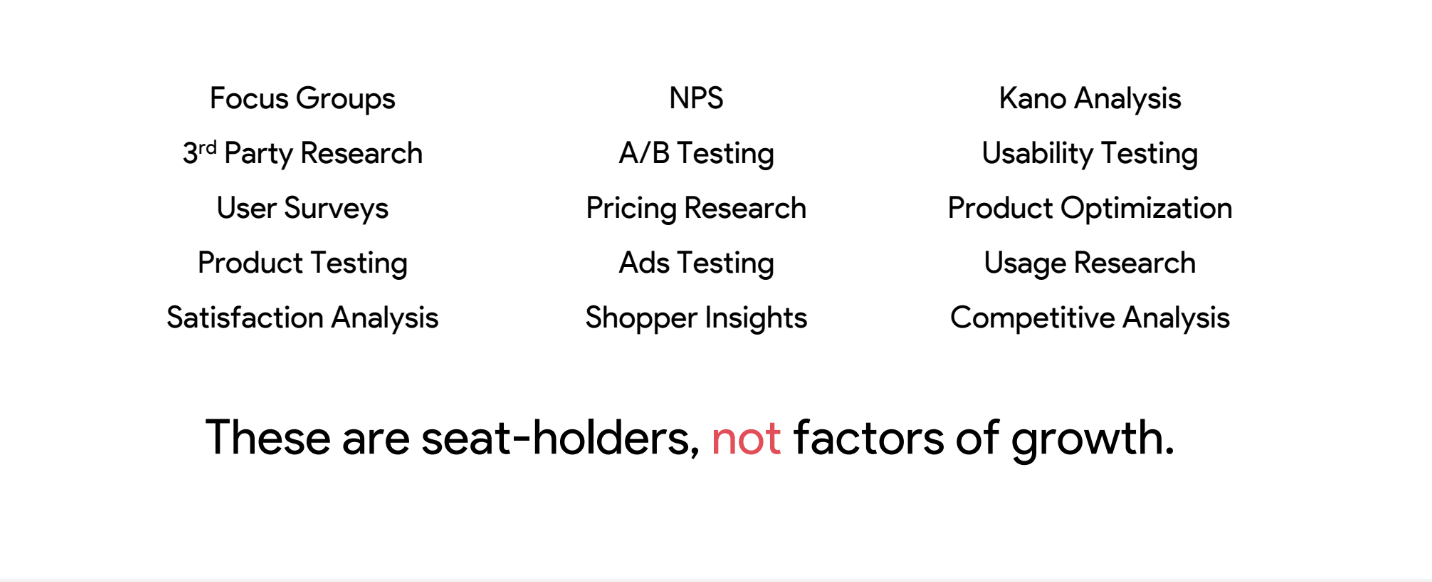
This is controversial but if any of these look familiar to you, if you're doing these, these are not factors of growth. These are the things that allow us to hold on to our seats internally in our own companies.
Bland ideas
Another big issue is everybody has kind of the same ideas. This is the Ford Edsel.

It's a car that was first introduced in 1957, by Ford, with the following tagline, "It acts the way it looks but it doesn't cost that much".
Who would want a car that acted the way that thing looked? It was a resounding failure for Ford and it's a way for us to understand that inside-out ideas are actually detrimental to product success.
Bland ideas are sneaky and take lots of forms
They can take a lot of forms.
Late to the party
It could be for example Google Trends saying this is a good opportunity for us, which, if it does, means you're already late to the party.
Peer pressure
You could say that everybody else is doing it, this is peer pressure, this is looking at the marketing saying "Oh my God, this is a feature our product needs, we cannot sell more because we don't have this feature" - it might be true, might not be true.
Ford Edsel syndrome
Then nobody else is doing it which I call Edsel syndrome, because there's a reason maybe why nobody else is doing that thing.
Tradition
Finally, this is how it was always done, which is traditional peer pressure from dead people. Do yourself a favor if you're working for a company that doesn't allow innovation, says you cannot do this because we have a way of doing things, find a different company.
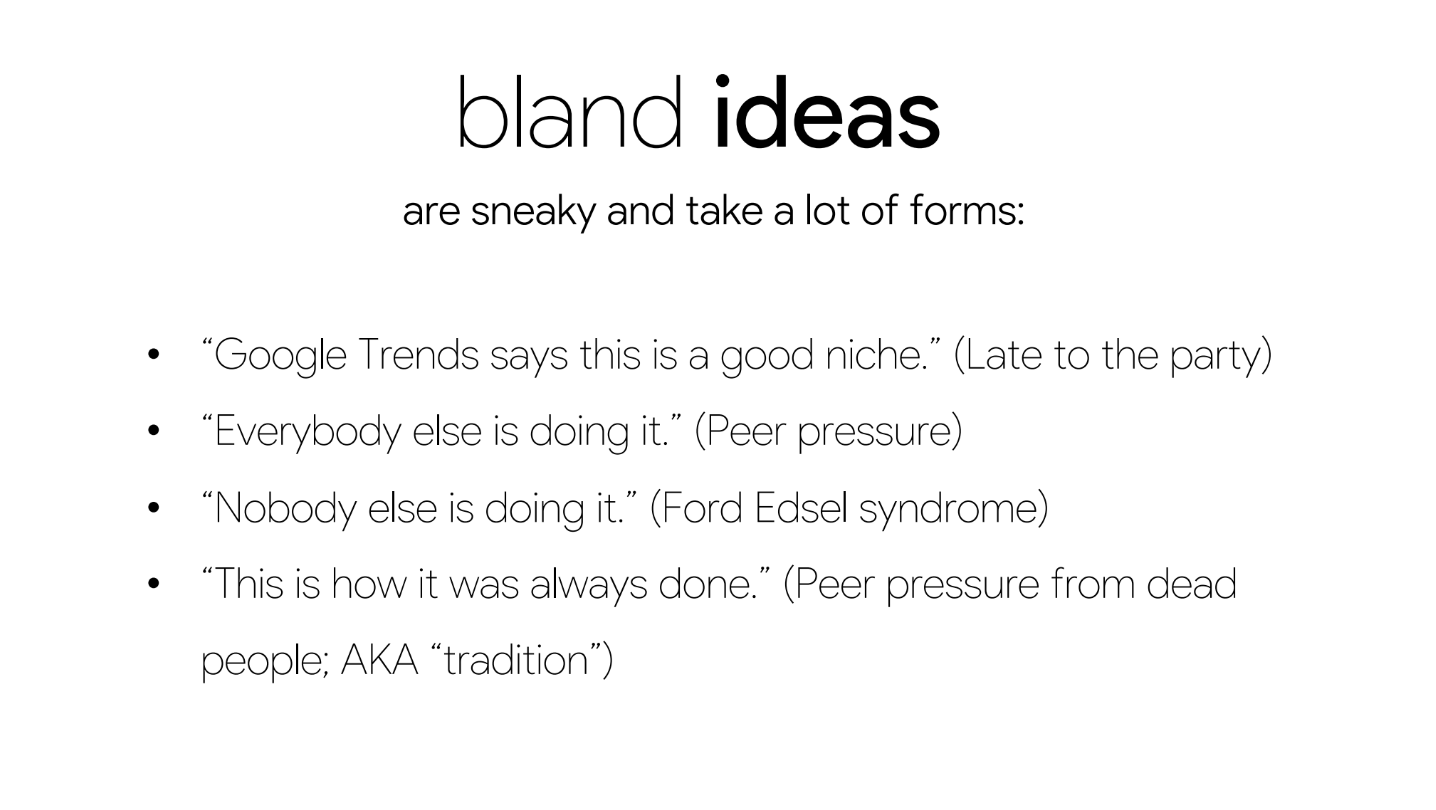
I know it's controversial, but this is what successful products look like...
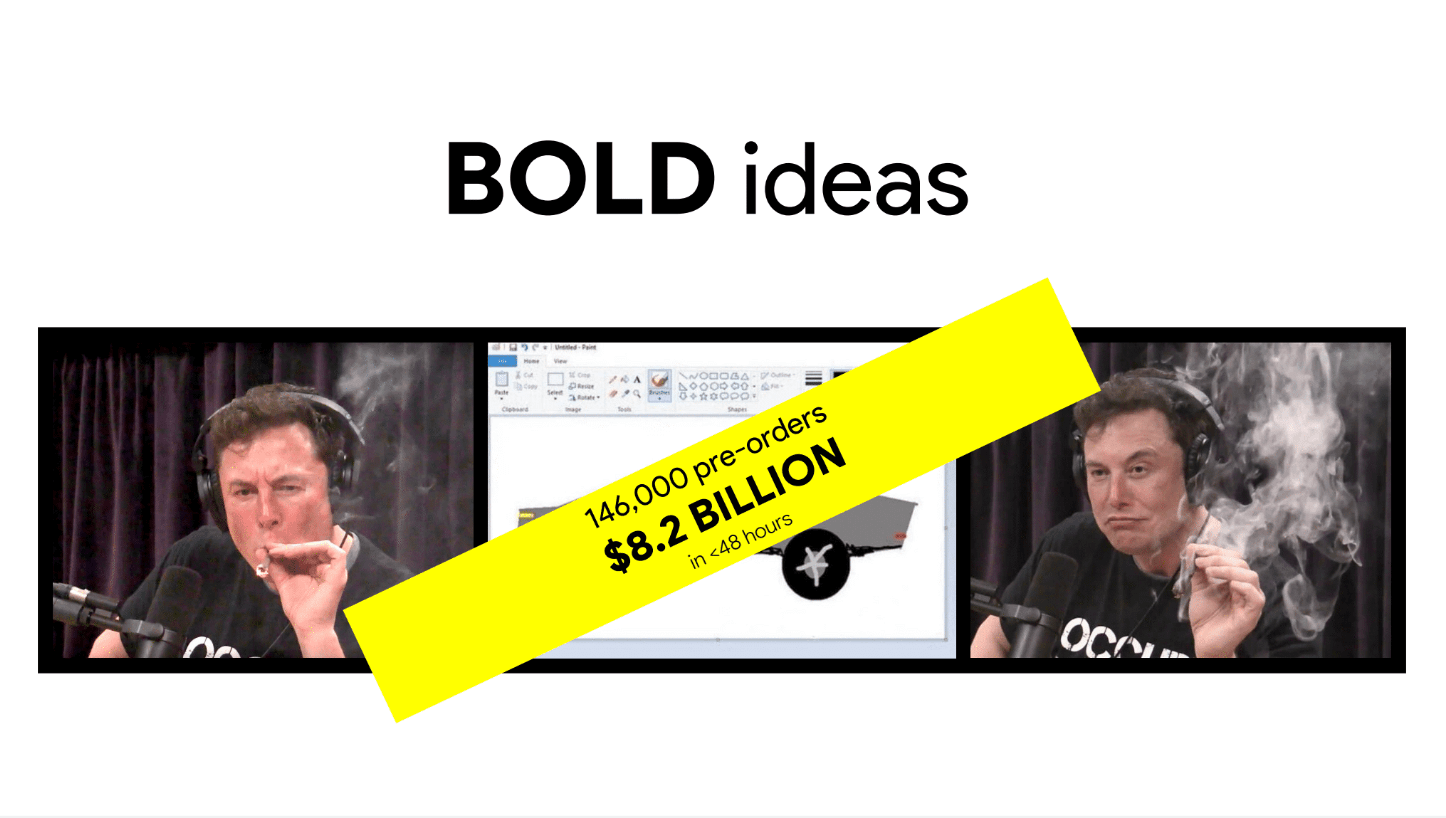
Bold ideas
Let's look at what constitutes a bold initiative. This is us on planet Earth, this is where SpaceX and Elon Musk have their headquarters, and this is Mars where Elon Musk is trying to get.
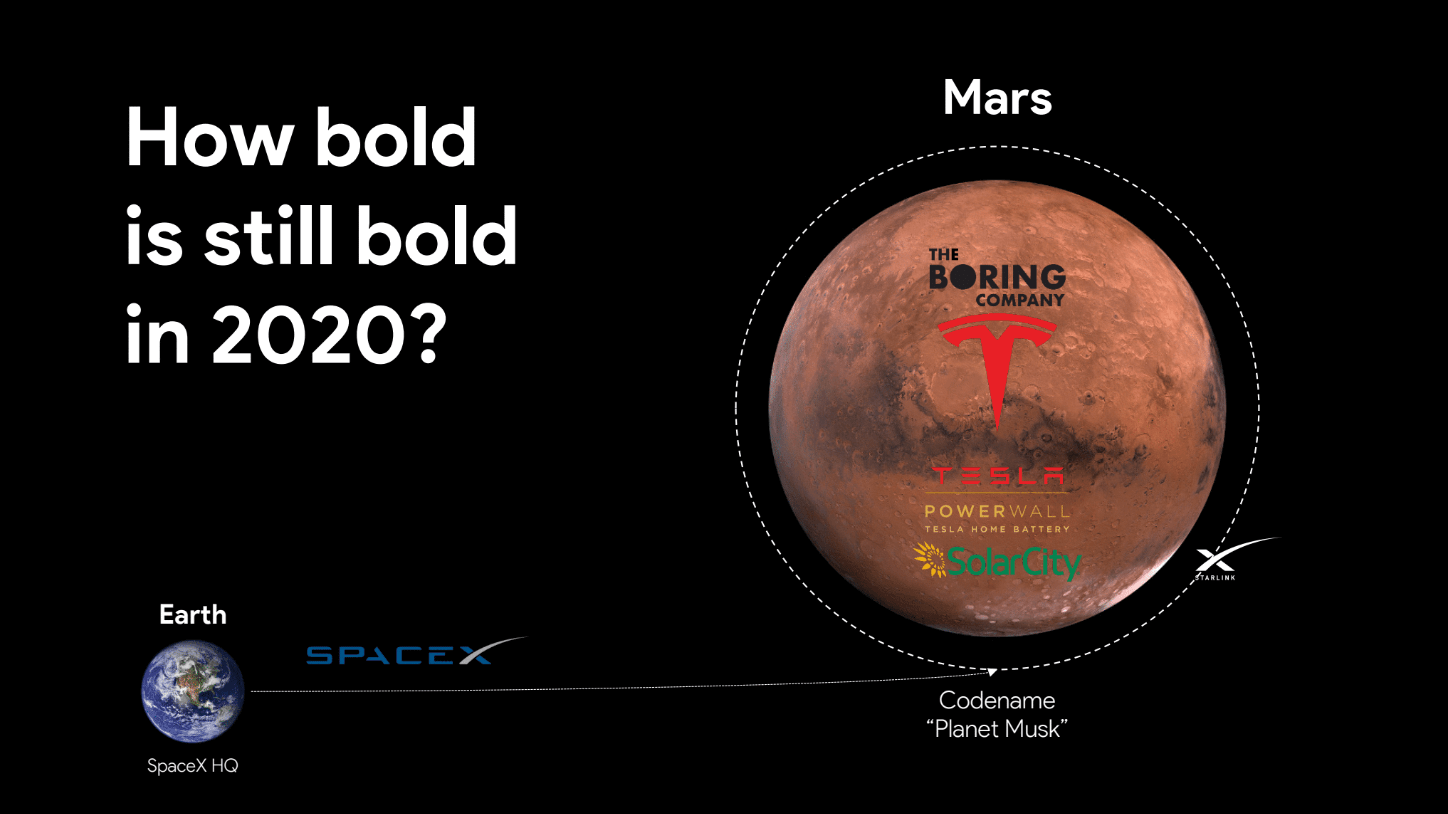
What he did is started a company called SpaceX, you might have heard of it. This is actually just a way for him to transport all of his products onto a new planet. He has Starlink, which is a way to connect everything interplanetary, it's a communication method.
Then he has the Boring Company which can dig infrastructure, he has Tesla, those ugly cars, which have actually been conceived for something like this on a different planet, and power everything with Solar City and Power Wall.
Average execution
To the opposing end of the spectrum, we have average execution from a lot of companies. You will know if you look around the industry, everybody else is doing the same thing.
If you're getting the same results, if you're benchmarking yourself and are happy you're right there in the middle then it's probably an average job.
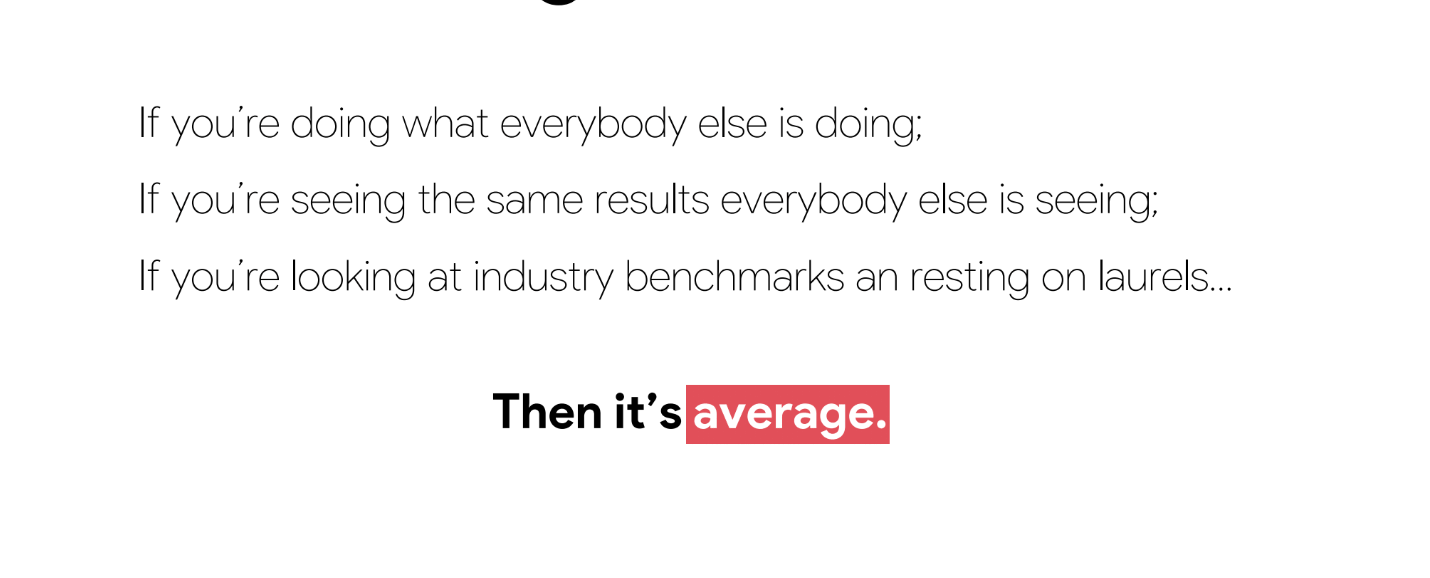
I've got some more examples from the fashion industry. I've taken out the brand names, can you actually recognize which brands are shown in the pictures?
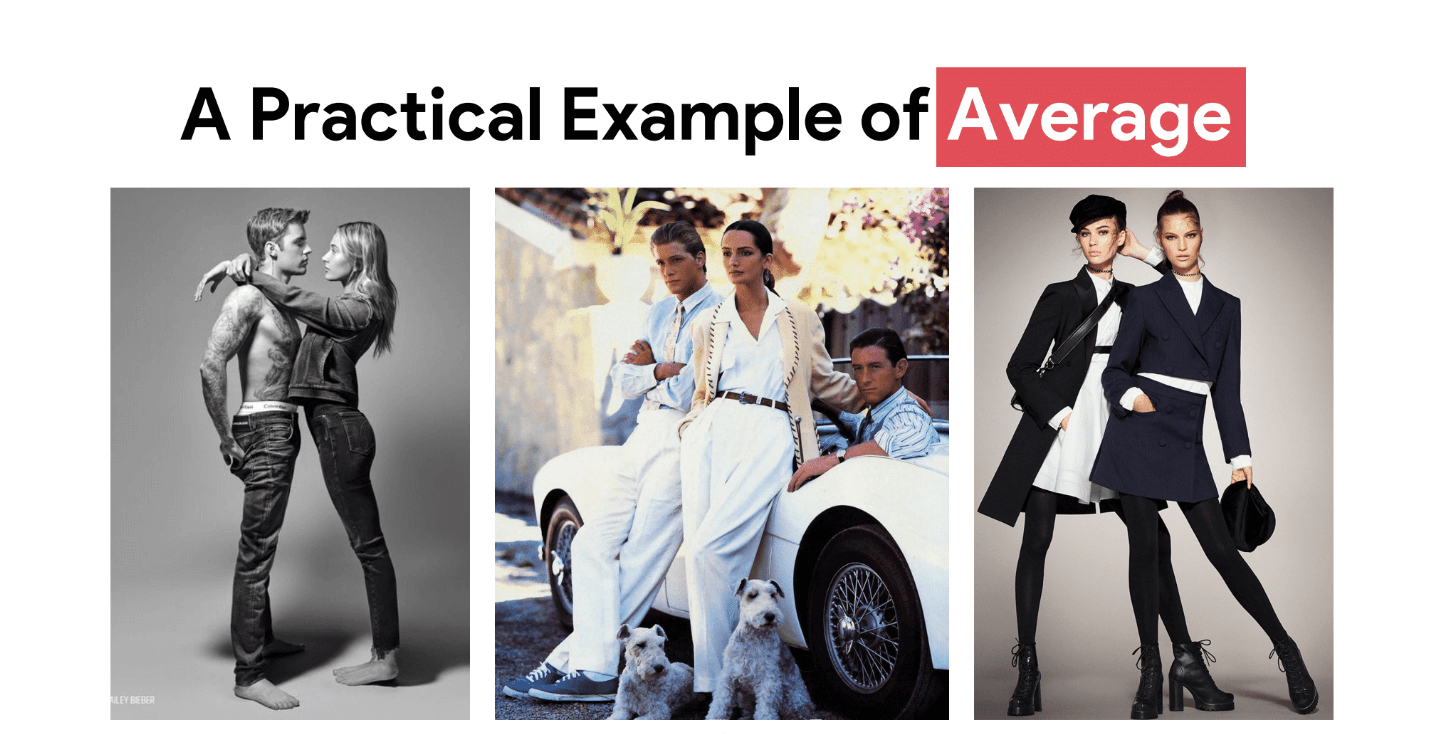
Everybody is doing the same thing. The clothes look almost identical. The style is a little different. But without the brand name label on the images, you could not recognize what they were doing.
A practical example of great
From the same industry, there is an example of a great marketing campaign. I bet you know who this is. In 1985 Tommy Hilfiger was an unknown with a low budget but was trying to make a name for himself. He collaborated with George Loise a legend of the American advertising industry.
With a $100,000 budget, they put up an ad in Times Square which said, the four great American designers for men are Ralph Lauren, Perry Ellis, Calvin Klein, and Tommy Hilfiger.
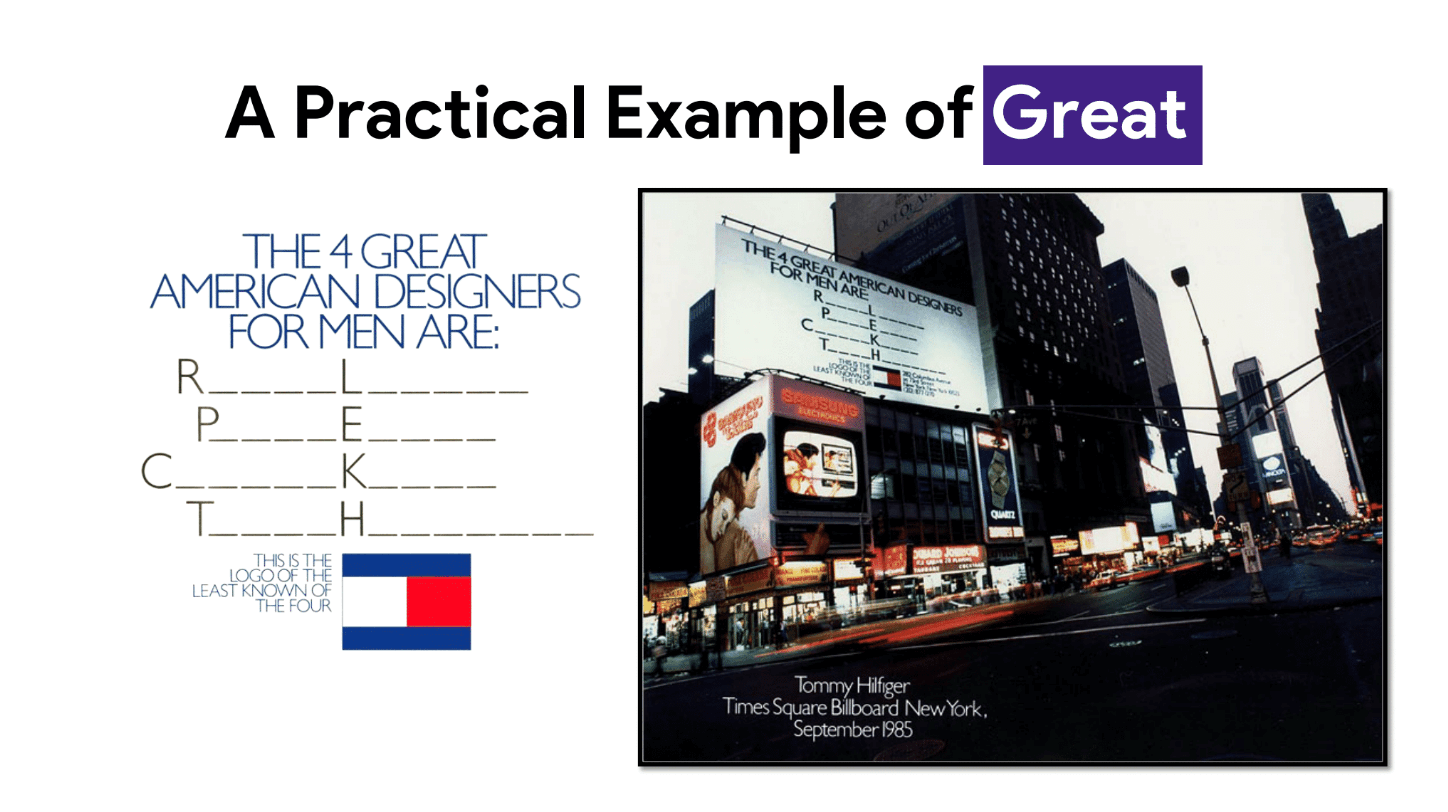
It was so outrageous that he would go after the biggest names in the industry, he who was a young unknown that people actually looked him up, and came into the Tommy Hilfiger store. Thus, he became the legend that he is today.
If that doesn’t work, what does?
If doing the same thing as other people doesn't work, if being average doesn't work, if looking at data all the time doesn't work, then what does? I'd like to recommend you:
- Do things that don't scale.
- Work your brain muscle every day and,
- Be bold, don't look back on what you've already done.
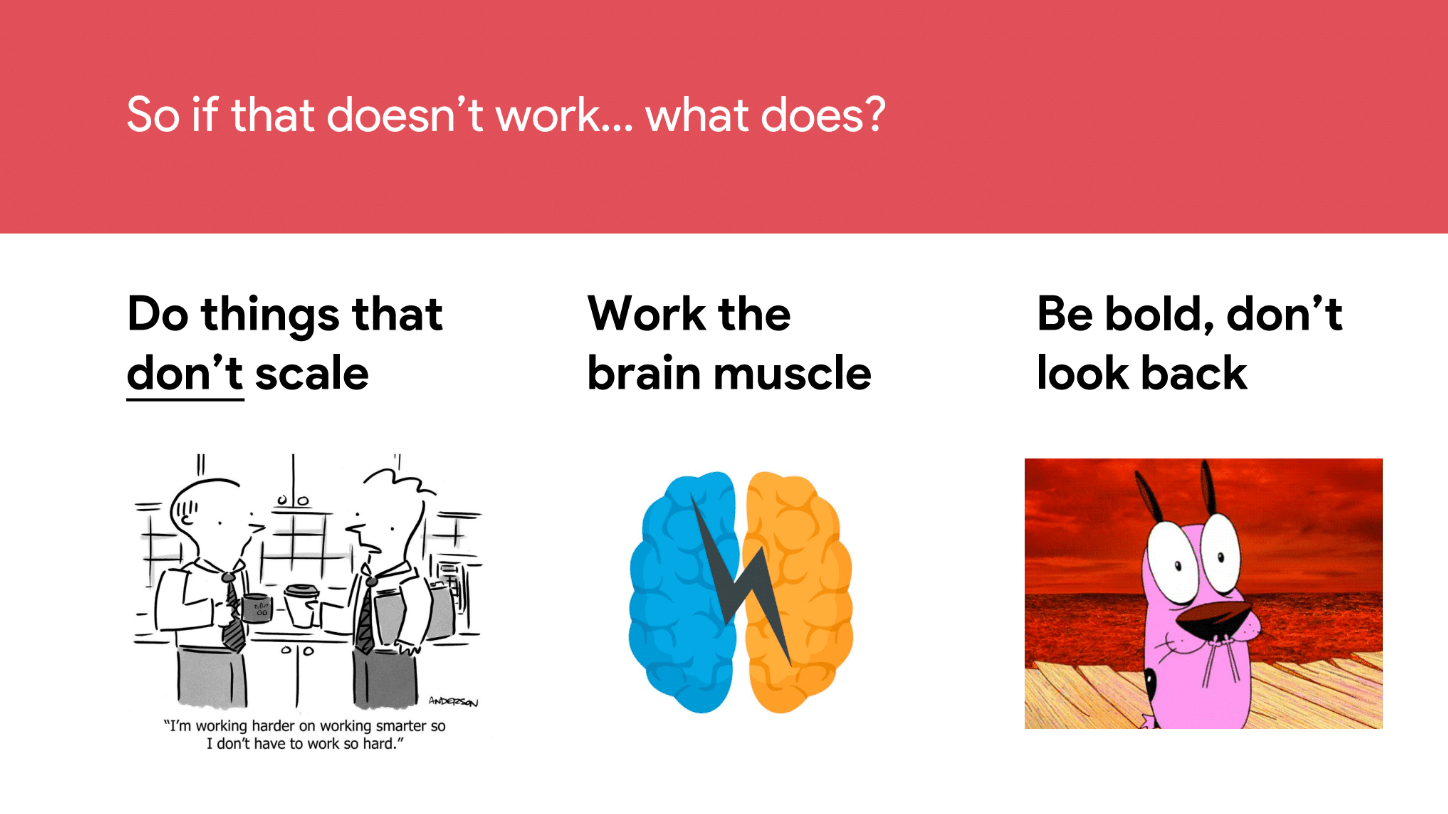
Let's take them one by one.
Do things that don’t scale
Doing the things that don't scale is a bit counterintuitive, but it's what, for example, Y Combinator recommends to new entrants.
Recruit your first users one by one
You can actually recruit your first users one by one, it might be surprising, but you don't need fully scaled marketing campaigns when you're introducing the new product. You can go out and do it yourself.
Make them happy
For example, Stripe the payments processor that is now the number one in the industry, its founders were doing something different than everybody else. When you launch a trial, you usually go "Would you like to try our new product? I will send you a link and you can install it".
What they did was they'd ask, "Would you like to try our product?" And when people said, "Yeah, sure, why not?" They immediately told them, "Okay, give me your laptop, I'll install it right now". They had conversations with their users and tried to understand and make them happy, even if this means having a 30-minute call every day with your largest clients.
This is something you cannot possibly do at scale but if you do it with a sufficiently large number of people, then you will be able to eventually automate it.
Roll up your sleeves and solve the problems your product doesn’t
Just roll up your sleeves and maybe try to solve the problem your product doesn't yet - do not scale before the demand is real. This is one of the pitfalls a lot of people fall into, wanting their products to grow and be successful.
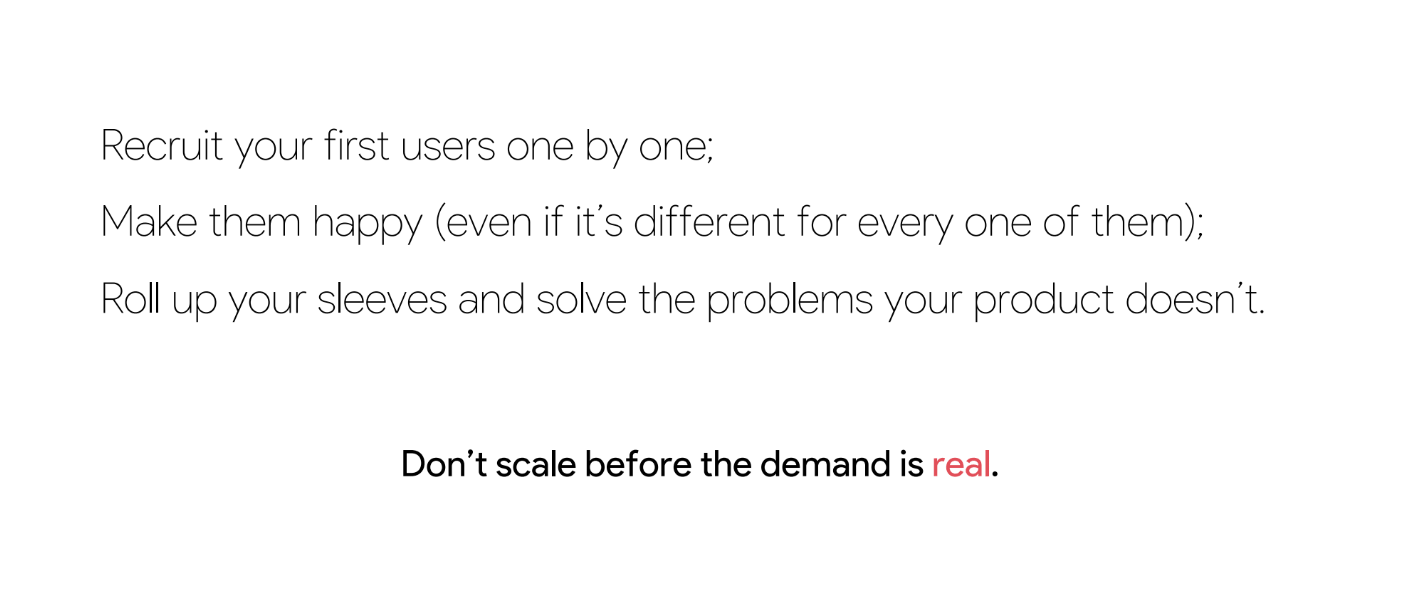
Do things that don’t scale: The Bitdefender Box
For example, I'm going to tell you a story about how Bitdefender turned a small plastic box into a scalable service. Back in 2015, we introduced the Bitdefender Box, which was a small network appliance that would protect IoT devices from consumers' smart homes.
It was a minorly successful product, it was the first of its kind and then a couple of years after we launched the Bitdefender Box 2. About this time we realized this wouldn't scale in this particular format, it required us to build the hardware, do the marketing ourselves, and generally put in a lot of extra effort just to make it scale the way we wanted to.
What we did was remove the physical constraints. We turned it into a software platform that would be able to integrate with basically any existing router. It's called the Bitdefender IoT Security Platform, and it's taken our manufacturing problems away from us and allowed us to really focus on integrating our service into as many products as possible.
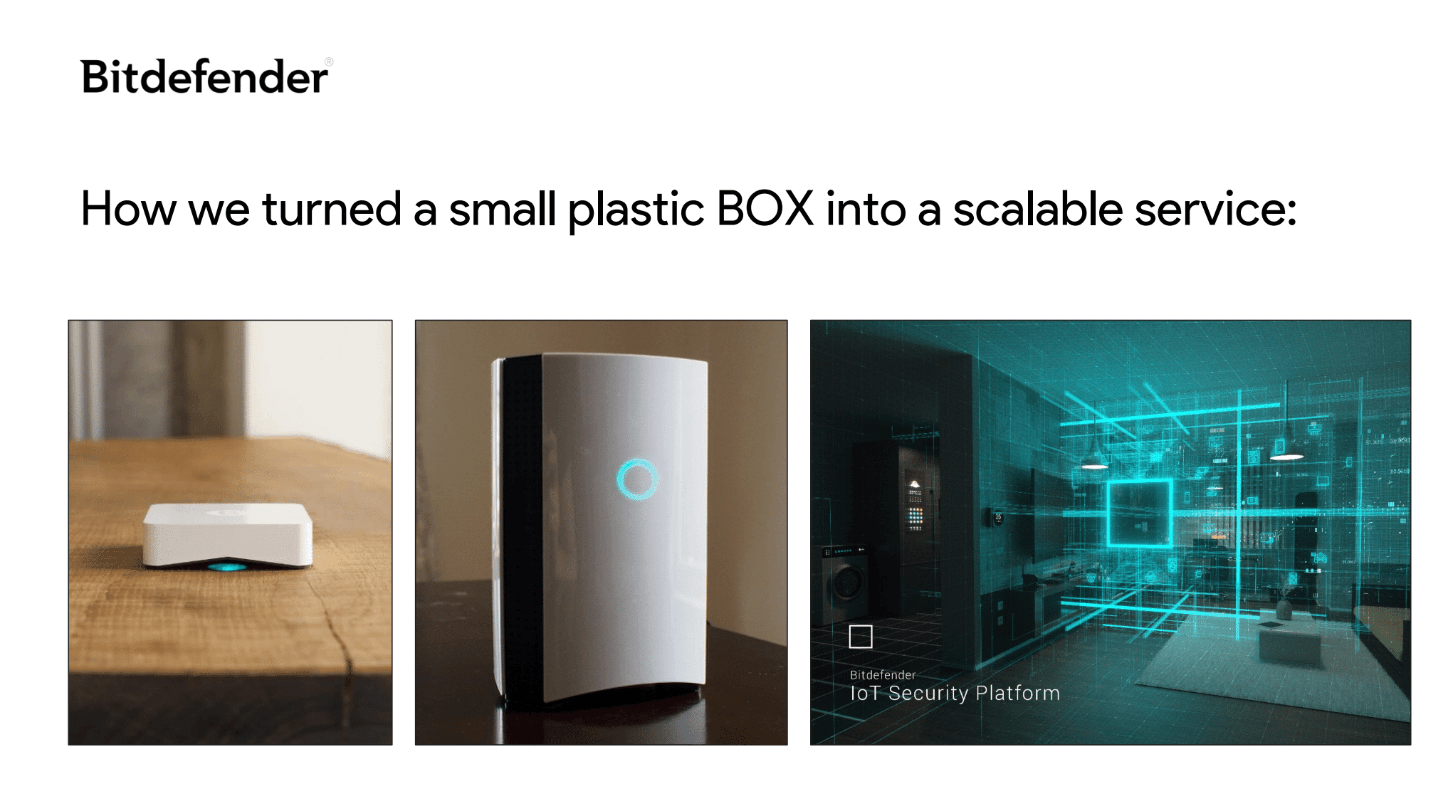
The outcome
We have achieved 20 times better market penetration with our collaboration with Netgear in the last year than we did in the previous four years with both versions of the Bitdefender Box.
What’s scarier?
Back to my previous points, I want to ask you, what's scarier? Is it:
- Solving problems in a way that isn't yet automatic, or
- Solving a problem that doesn't exist with something automatic?
If there is an opportunity for you to grow, but the possibilities aren't there yet, just do the manual work yourself and then automate yourself out of the loop. Eventually, you will find the momentum you need to achieve success.
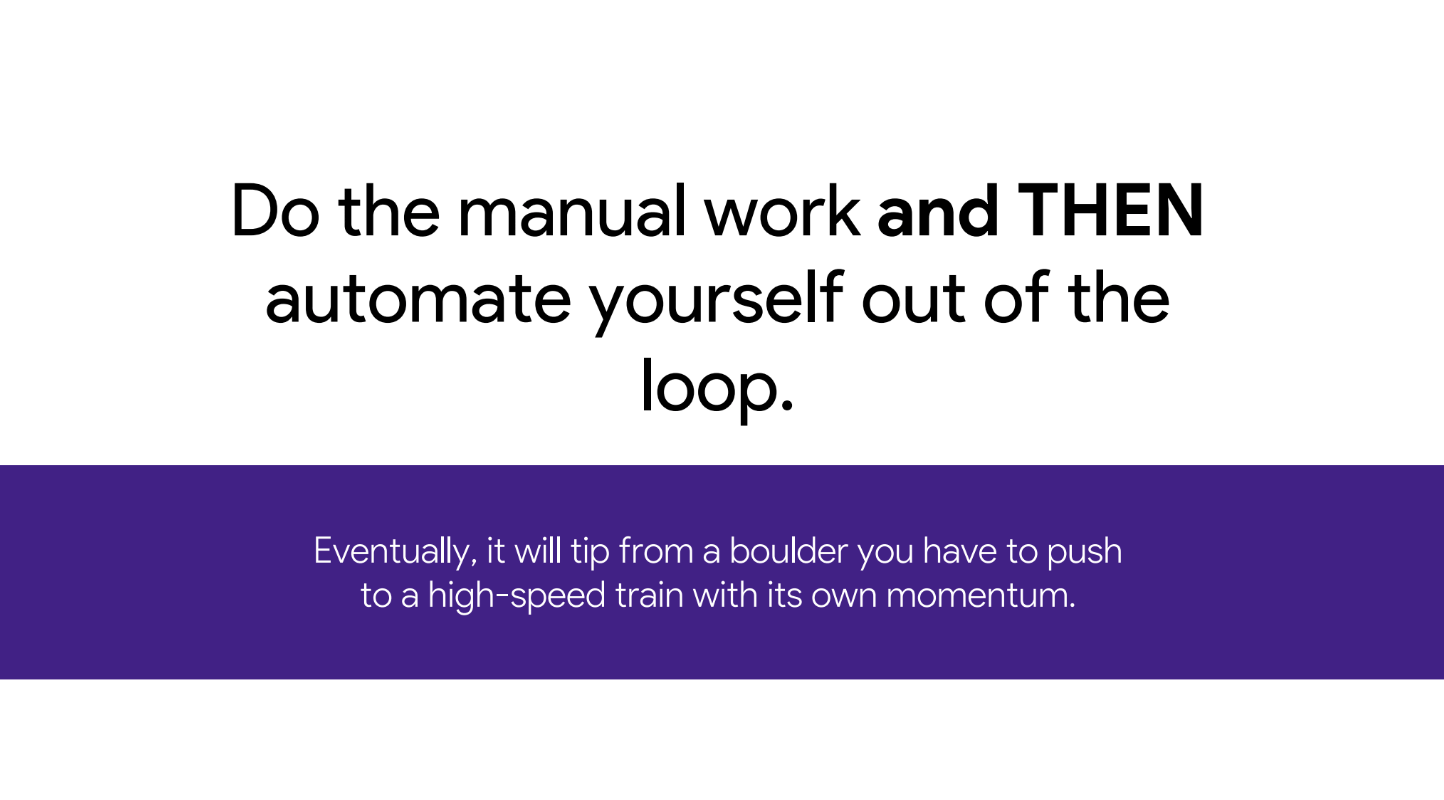
Work your brain muscle every day
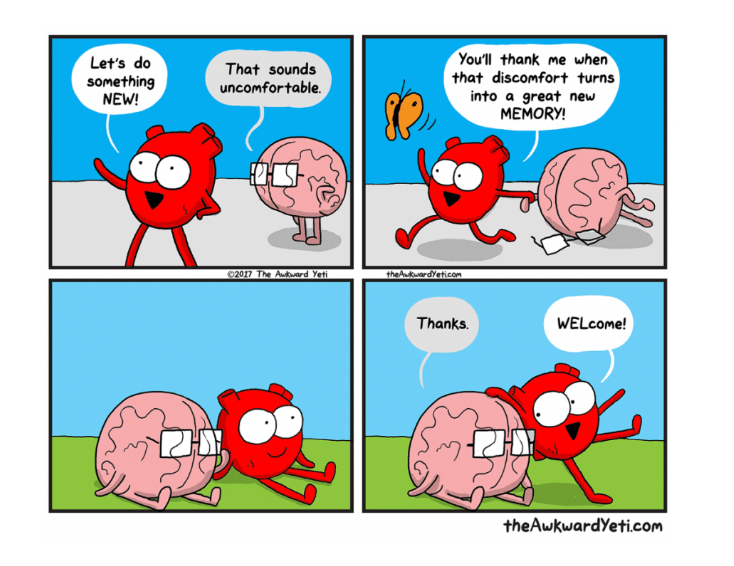
Get 1% better every day
If you get one percent better every day, then you will eventually find yourself in a much better position than if you would maybe put in a lot of effort at one particular time and hope that your big launch will achieve you the success that you want.
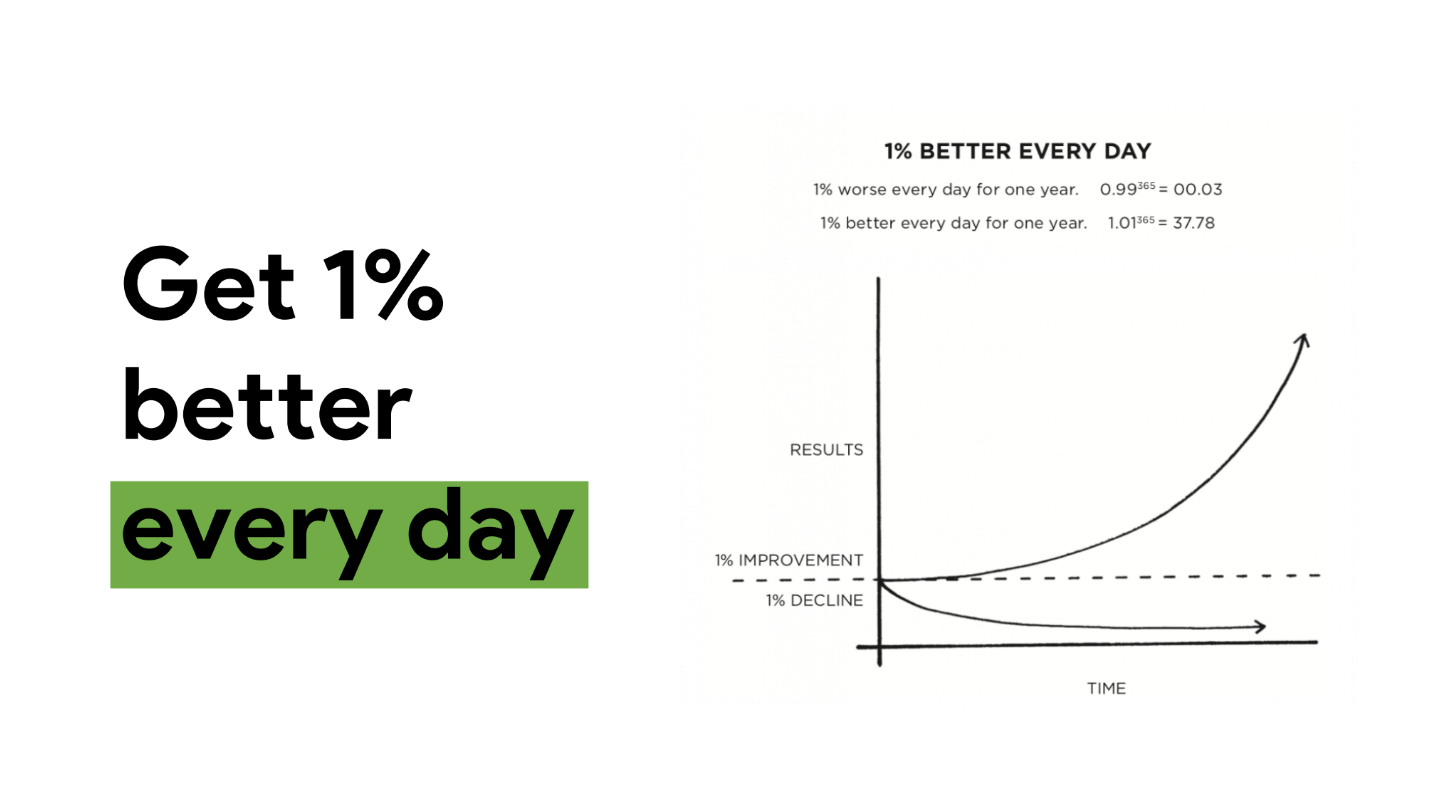
Things a PMM should be good at
These are the things PMMs should be good at.
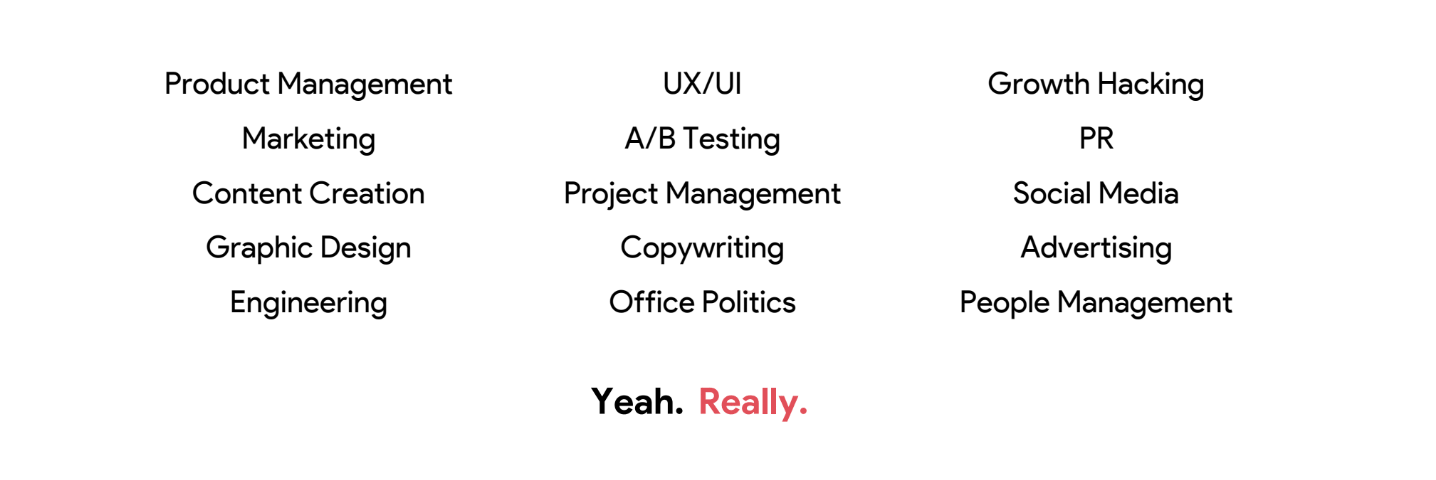
If you think you cannot get 1% better every day, then here's this list. Decide on a particular topic you want to work on, give yourself 30 minutes a day and you will eventually see better results with your products as well.
Be bold
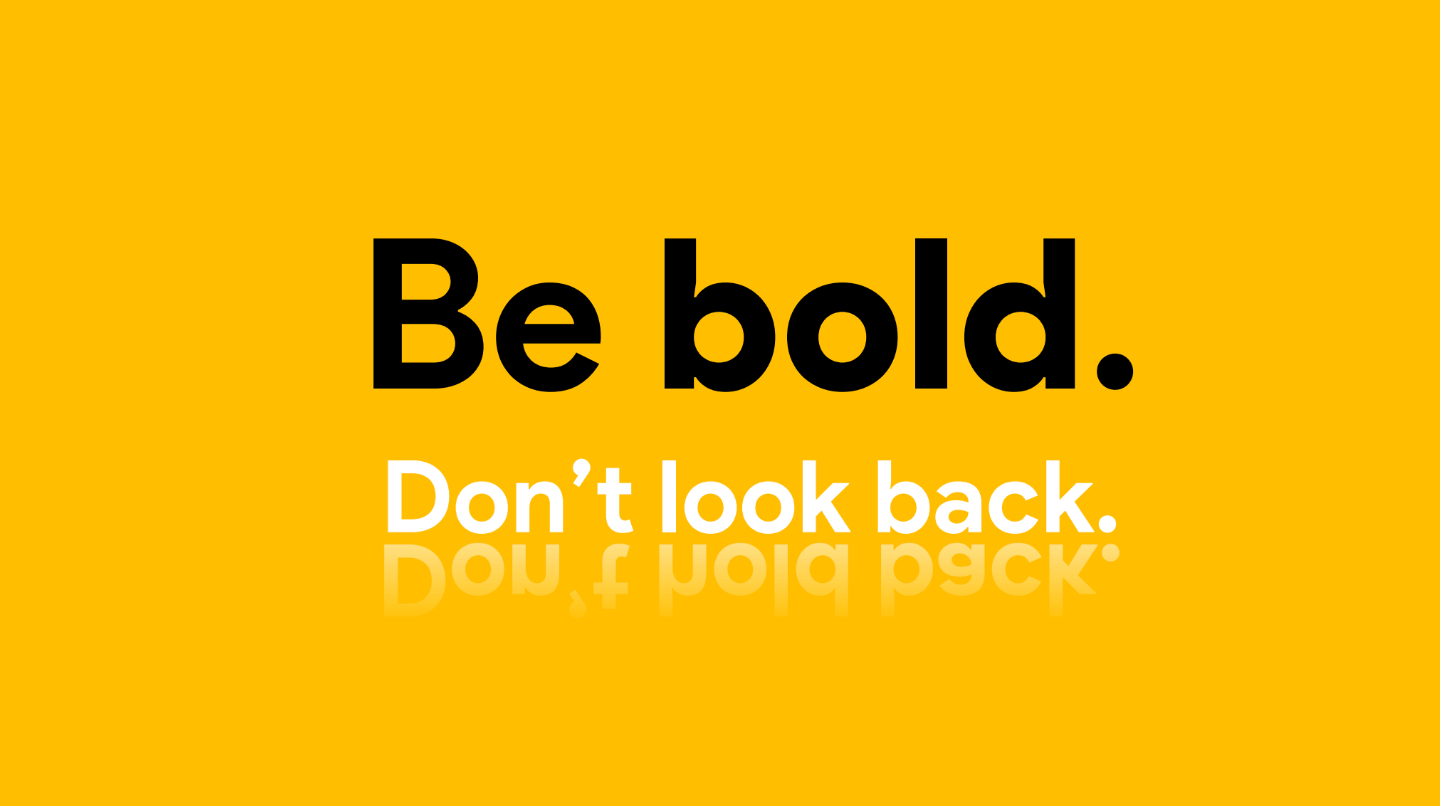
Have the audacity to put a yellow image in an article that didn't contain yellow. Don't be afraid to try new things because people are not going to remember everything that you did.
YouTube, a dating service?
For example, YouTube. Do you remember the early days of YouTube? Did you know they put up a Craigslist ad for attracting people who were into dating?
YouTube founders wanted their platform to get some initial traction so they tried a lot of things in those early years, putting even a Craigslist ad for I believe women between 18 and 35.
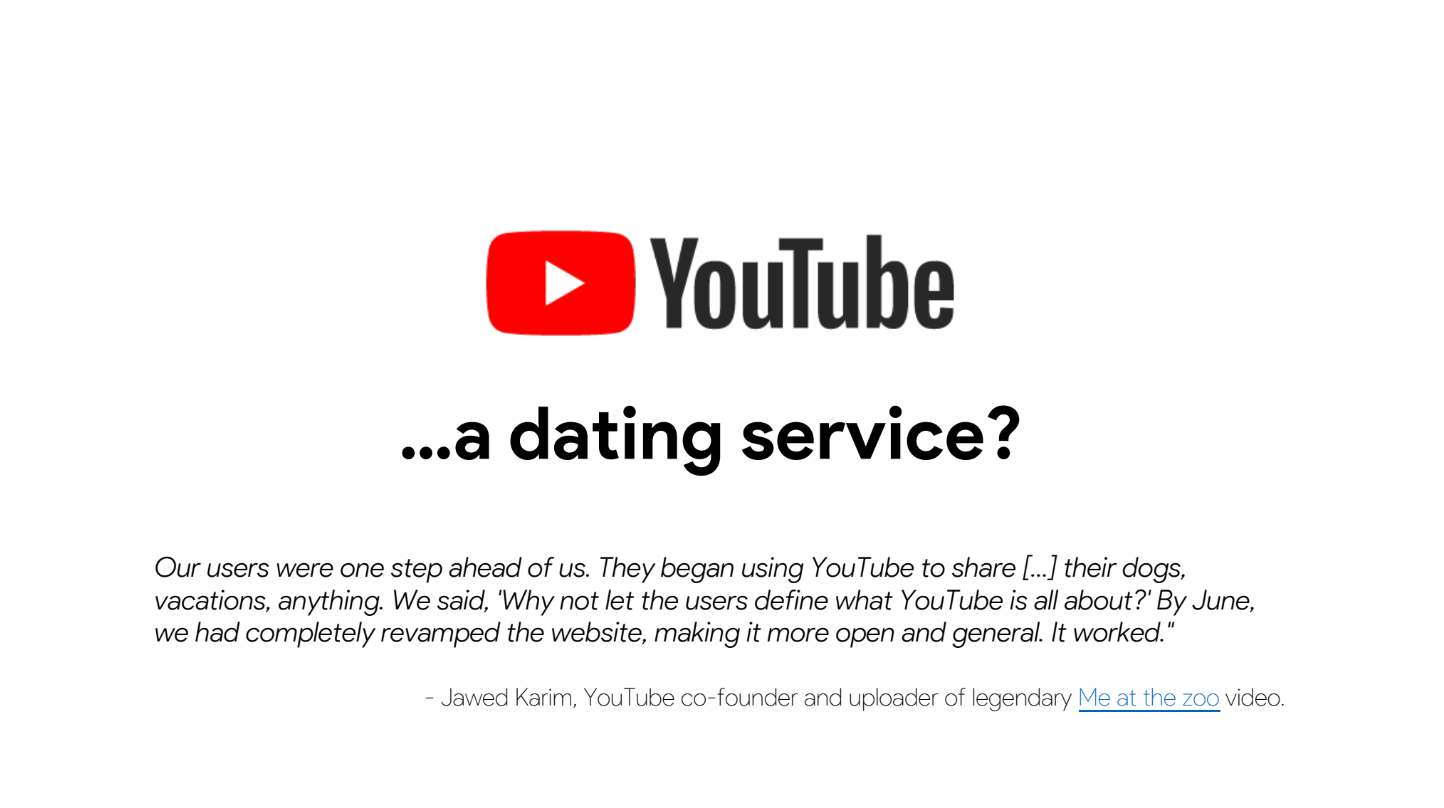
Slack, the video game?
Slack started out as a video game actually and once they realized the unit economics weren't there, and the product would actually cost them money out of their own pocket, they scratched the entire game, kept the chat component, and pivoted towards what is now arguably the most successful communication platform for businesses.
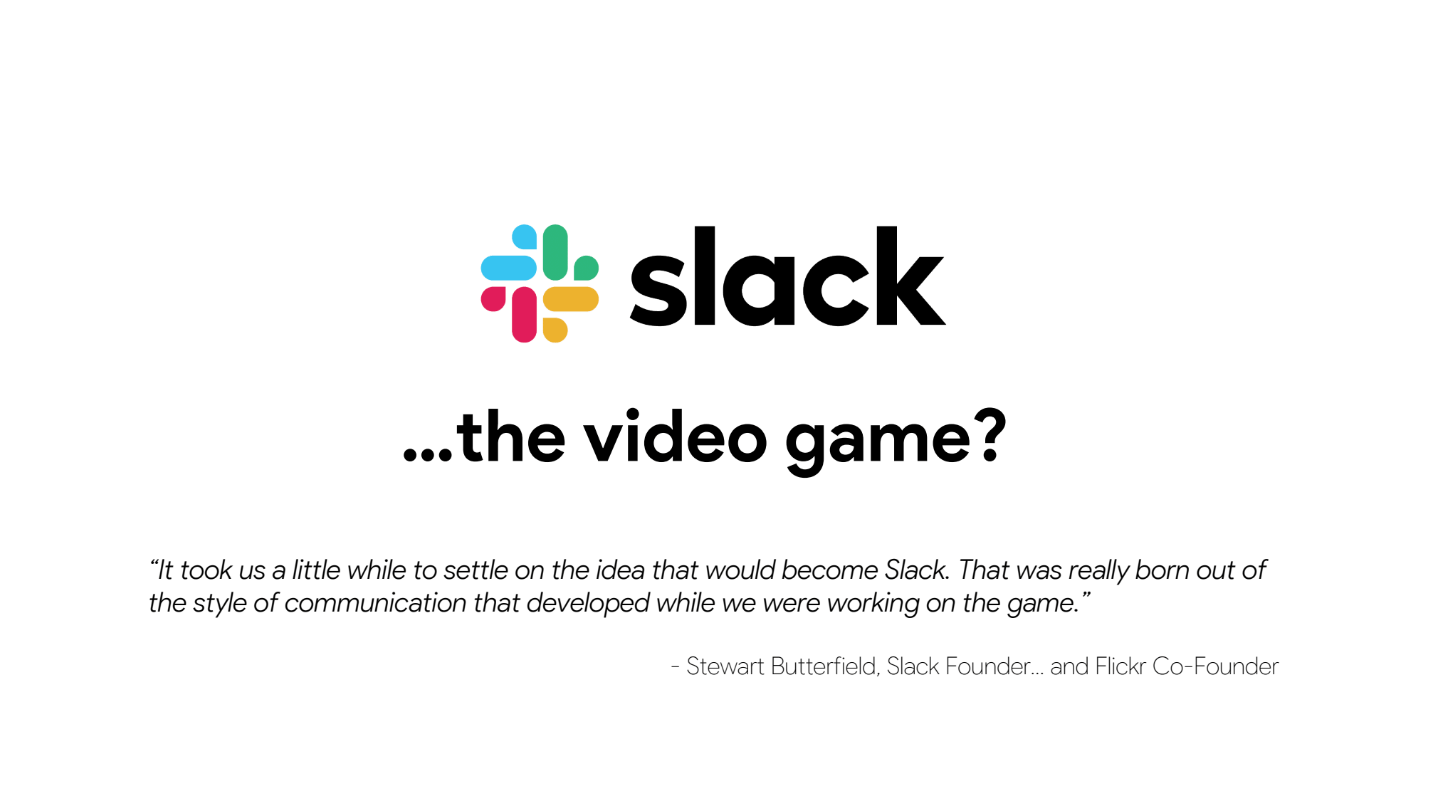
There are a lot of big names who started out as something different or did something different along the way.
- Samsung started out as a general convenience store including dried fish and flour exports to China.
- Nokia started out as a wood pulp mill then they did some rubber boots. There's actually a company called Nokian, which does car tires and rubber boots, and was a spinoff from the original Nokia.
- Nintendo started out as a hanafuda playing card company, it's a type of popular card game in Japan. Then they tried a lot of things along the way, including being a taxi company, ramen noodle company, they even had some love hotels at one point which is exactly what you think it is.
- Western Union was initially a telecom service until the telephone almost put them out of business and they had to pivot toward being a money sending service. My bet is they will need to do something like this again with the rise of revolute and instant payments.
- Playdoh, the popular children’s putty was initially a wall cleaner for coal residue. We are no longer using coal-fueled heating in our homes but this was a big issue at the beginning of the 20th century - the walls were blackened with a cold residue, and somebody invented a substance that was able to clean the dirt.
But once people start using alternative methods of heating, they had to find an alternative use to this substance, which is now known as Playdoh.
- Twitter started as a podcasting service but quickly realized they can do so much more with their platform than that.
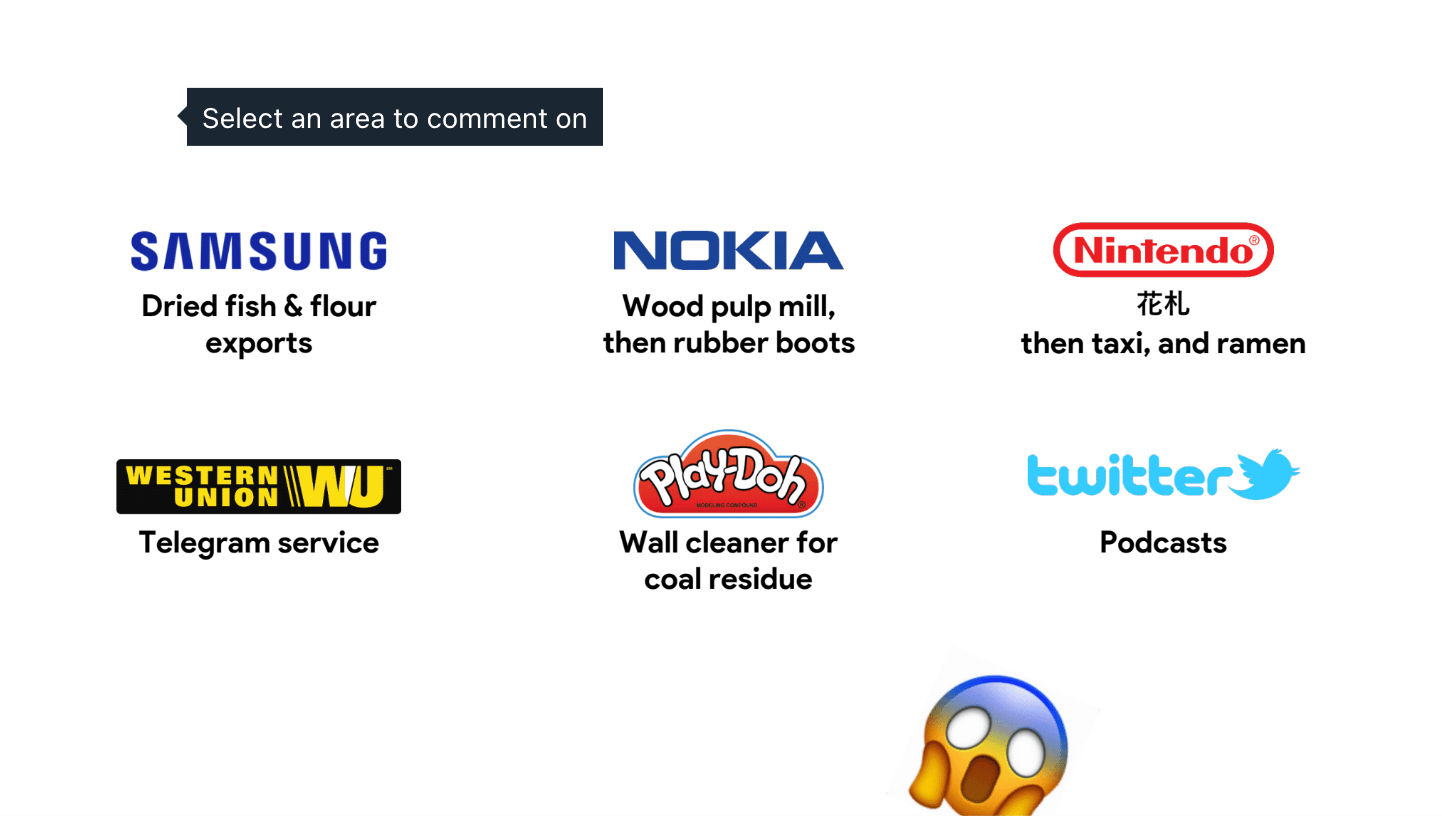
Remember, people are only going to remember you for one thing
I want you to remember you're freer than you think to do things that you wouldn't normally dare to because people are only going to remember you for one thing.
I want you to decide which one it's going to be.
Thank you very much.



 Follow us on LinkedIn
Follow us on LinkedIn



